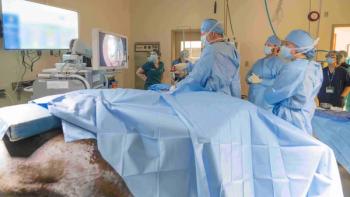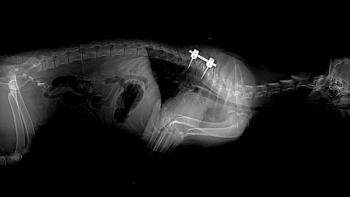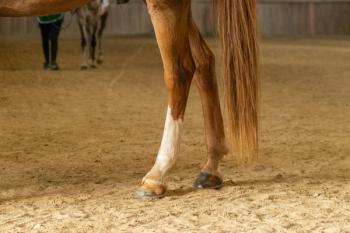
Neurologic case discussion (Proceedings)
The neurological examination should be performed with great care and with age and use differences in mind.
Neurologic examination and other considerations
The neurological examination should be performed with great care and with age and use differences in mind. The predicament in old horse neurology is the interpretation of the findings in the "standard" neurologic examination. The boundaries of normal for many of the neurological examination tests on younger horses need to be broadened for older horses. In some cases, 'normal' for an older horse may be considered 'abnormal' for younger animals. In older horses there are neurological signs of aging that are, at least clinically apparent in horses and well documented in human patients. Unfortunately, it can be assumed that some fraction of these horses had age associated reduced neuromuscular function or had osteoarthritis, but were ascribed neurological deficits and were simply - old. As a general rule a lackadaisical response to any pushing, pulling, prodding or other stimuli is the norm in geriatric horses. Below are some specific issues that the author has found particularly problematic.
Most reflexes in geriatric horses are slowed, as occurs in human patients, and these may not all slow simultaneously. So a sluggish papillary light reflex, a subdued menace or cutaneous reflex, as long as the finding is bilateral, should not be considered an issue, but should be noted. Most of these changes occur in geriatric patients in association with neuraxonal degeneration, accumulation of degenerative axonal bodies, and reduced axonal nutrient flow.
An important thumb-rule to keep in mind when performing a gait analysis during the neurological examination is that when neurological deficits exist alone, the gait is likely to be arrhythmic. If there is musculoskeletal disease alone, then the gait is likely to be rhythmic. When both conditions exist, then the degree of rhythmicity is determined by the 2 deficits relative severity to each other. Hence, a moderate lameness will add rhythmicity to a gait abnormality when the neurological deficit is milder and vice versa. Also realize that pain can increase sensory input to cortical centers and improve compensatory abilities in neurological deficits. This seems to be the theory why in mixed disease animals, after a course of non-steroidal anti-inflammatory (NSAID) medication, many times the neurological deficit is more pronounced. In general, mixed system gait abnormalities tend to be rhythmic, but usually the gait arrhythmia is enhanced by a course of NSAID therapy, as long as the lameness is mild. So when in doubt, apply NSAIDs for a few days, and then take the horse for a walk on pavement and listen to the gait. In the author's experience, this rule holds true for aged horses as well.
Circling
Unfortunately, 'abnormal findings' associated with this test seem to often bias the further evaluation of the patient. This author recommends that this test be performed after the entire examination is complete, because of its impact on the subjectivity of the neurological examination. The manipulation involves tight circling of the horse with observation for planting of the medial limb and circumduction of the outer limb. Circumduction is an extended time and lateral excursion of the outer limb arc with hypermetric abduction. This leads to a wide outward and upward arc of the limb. This abnormality is often identified as a general proprioceptive (GP) dysfunction. However, the spastic phase of this gait abnormality is reminiscent of an Upper Motor Neuron (UMN) hyper-reflexia. Also, since this is most often an indicator of a spinal cord deficit, and since GP and UMN tracts course so tightly together, it is likely that circumduction associated with spinal cord disease is influenced by UMN deficits as well. Clearly, this may not be the case with cerebral, cerebellar or other higher center disease. Many horses have been identified as neurologically dysfunctional based on this response alone. Horses with subtle pelvic limb pain (especially the tarsal and femorotibial joints) circumduct the affected limb and pivot on the normal limb, albeit in a less exaggerated and more rhythmic and consistent fashion than horses with moderate to severe neurological deficits. This response apparently protects the abnormal limb from flexion (the arc is needed to move an unflexed limb) and from weight bearing (remaining on the non-painful limb as long as possible). One thing to keep in mind when evaluating this test is to note whether or not the horse tilts its trunk to the center and lifts its outer hip to move the affected limb (as can be seen with lameness) or does the horse drop the outer hip with this procedure (as can be seen with neurological disease). This is by no means a hard rule, however, this observation can be helpful. Again, observation will identify that this response, when associated with the musculoskeletal system, is consistent in extent and rhythmic in the lame horse and inconsistent and arrhythmic in the neurologically impaired horse.
Newsletter
From exam room tips to practice management insights, get trusted veterinary news delivered straight to your inbox—subscribe to dvm360.




